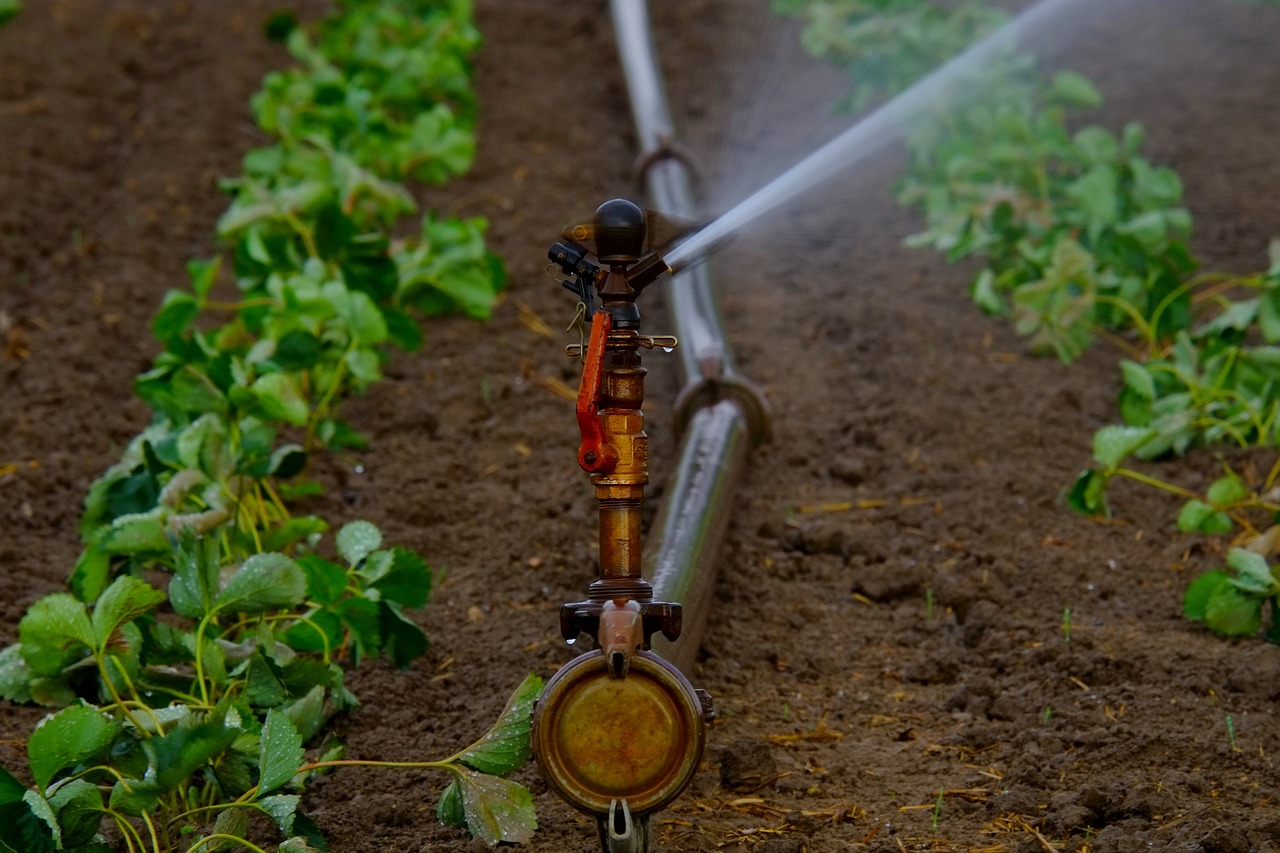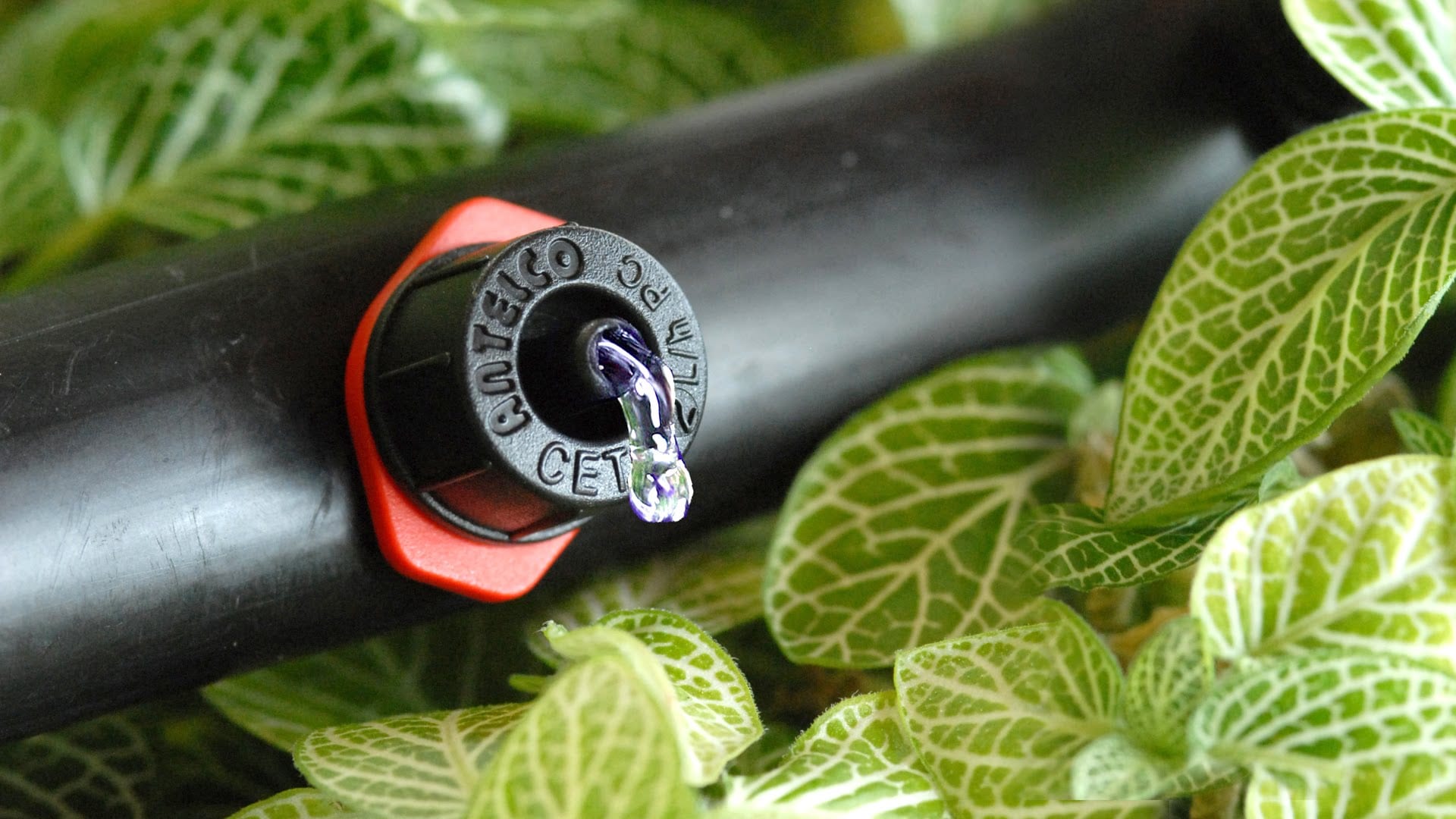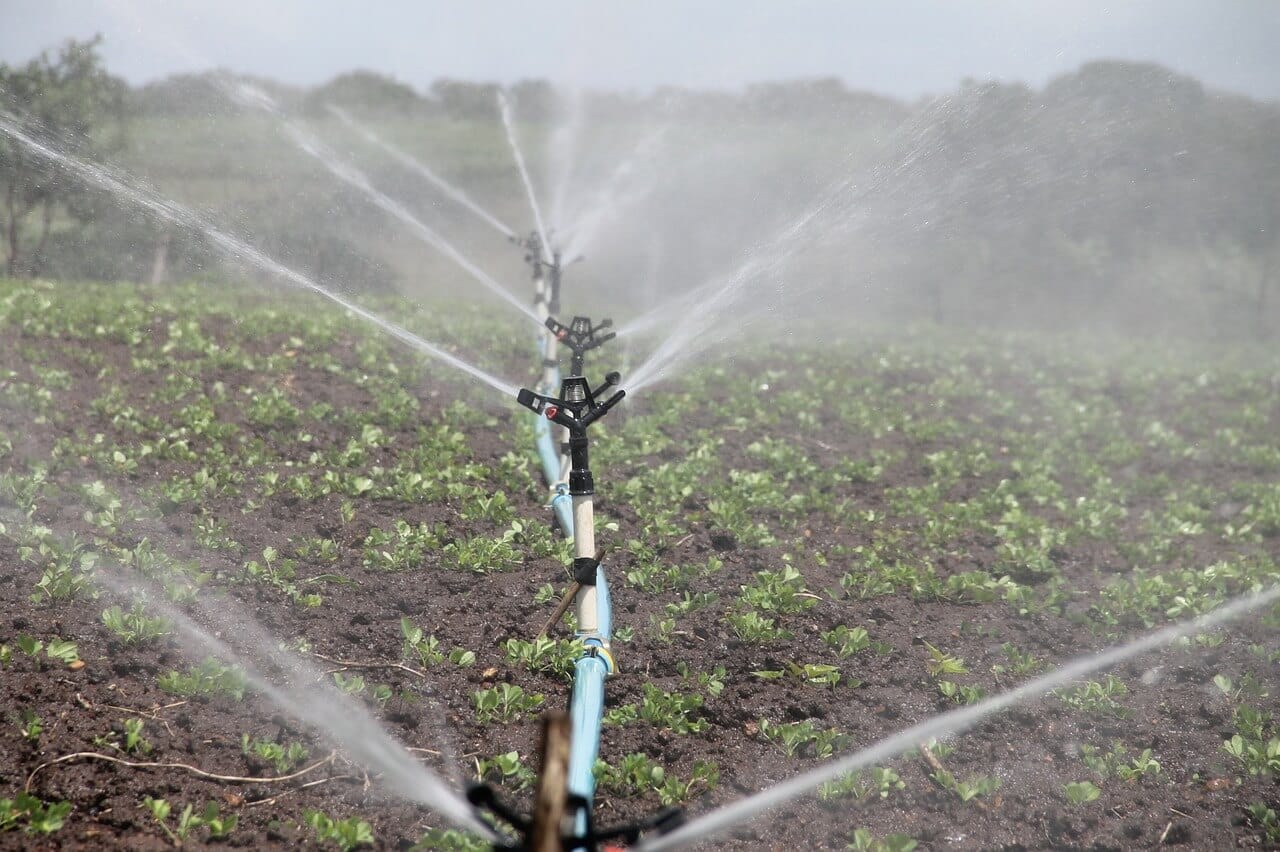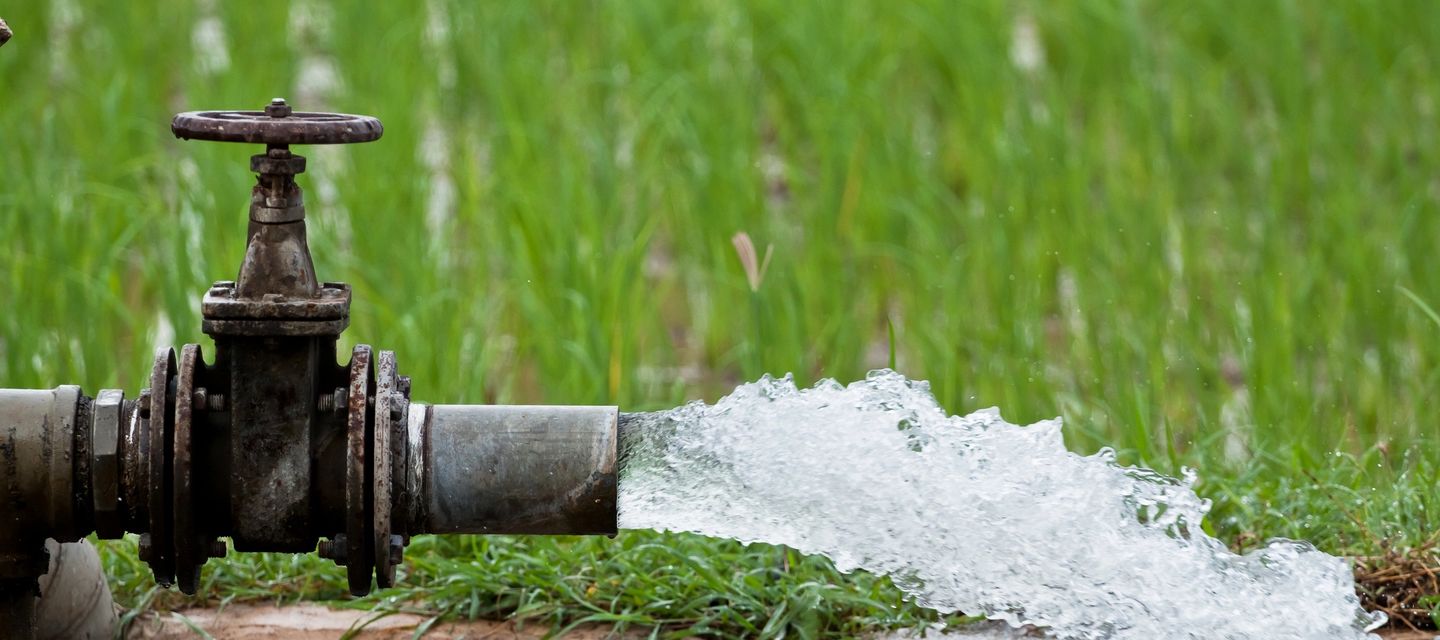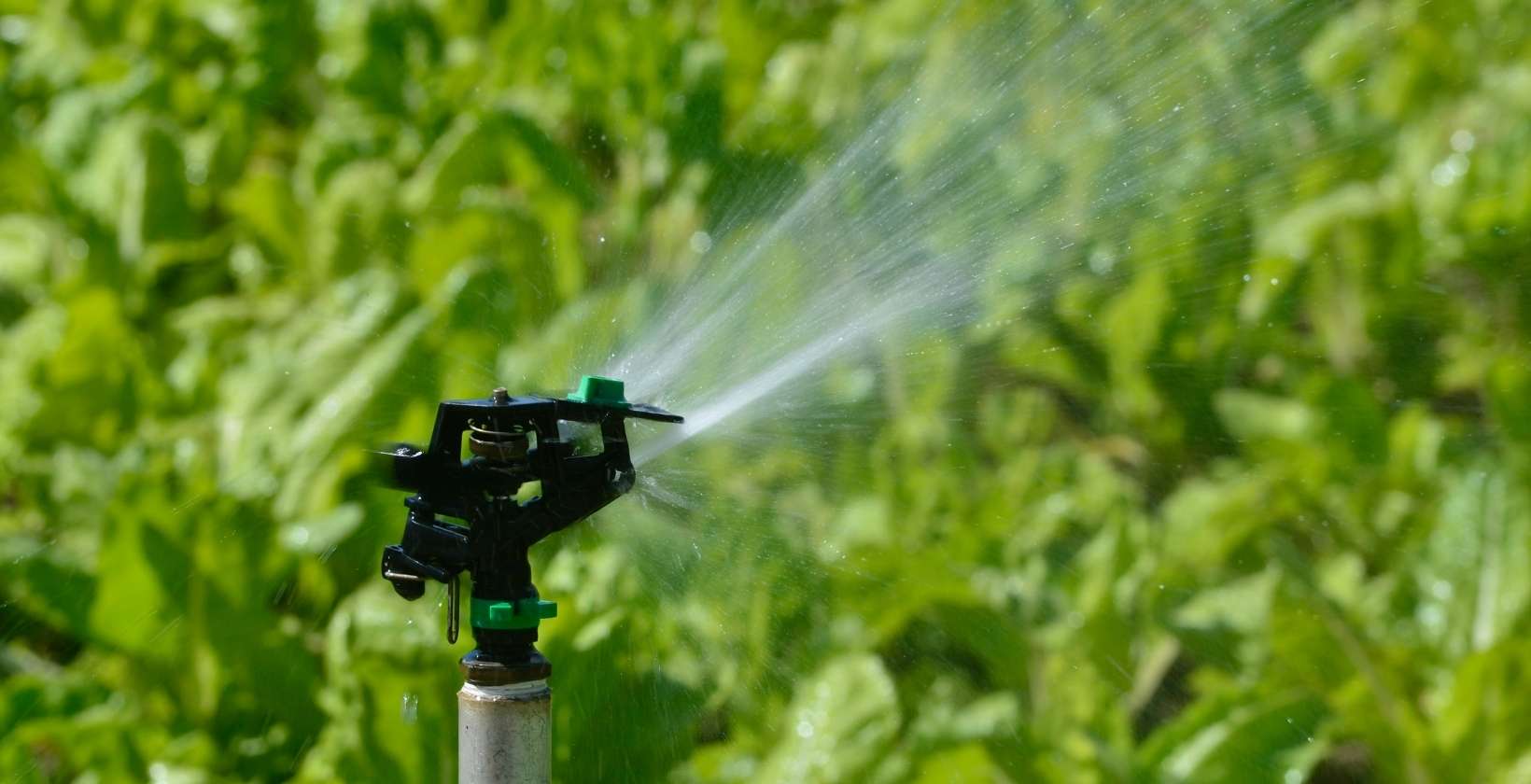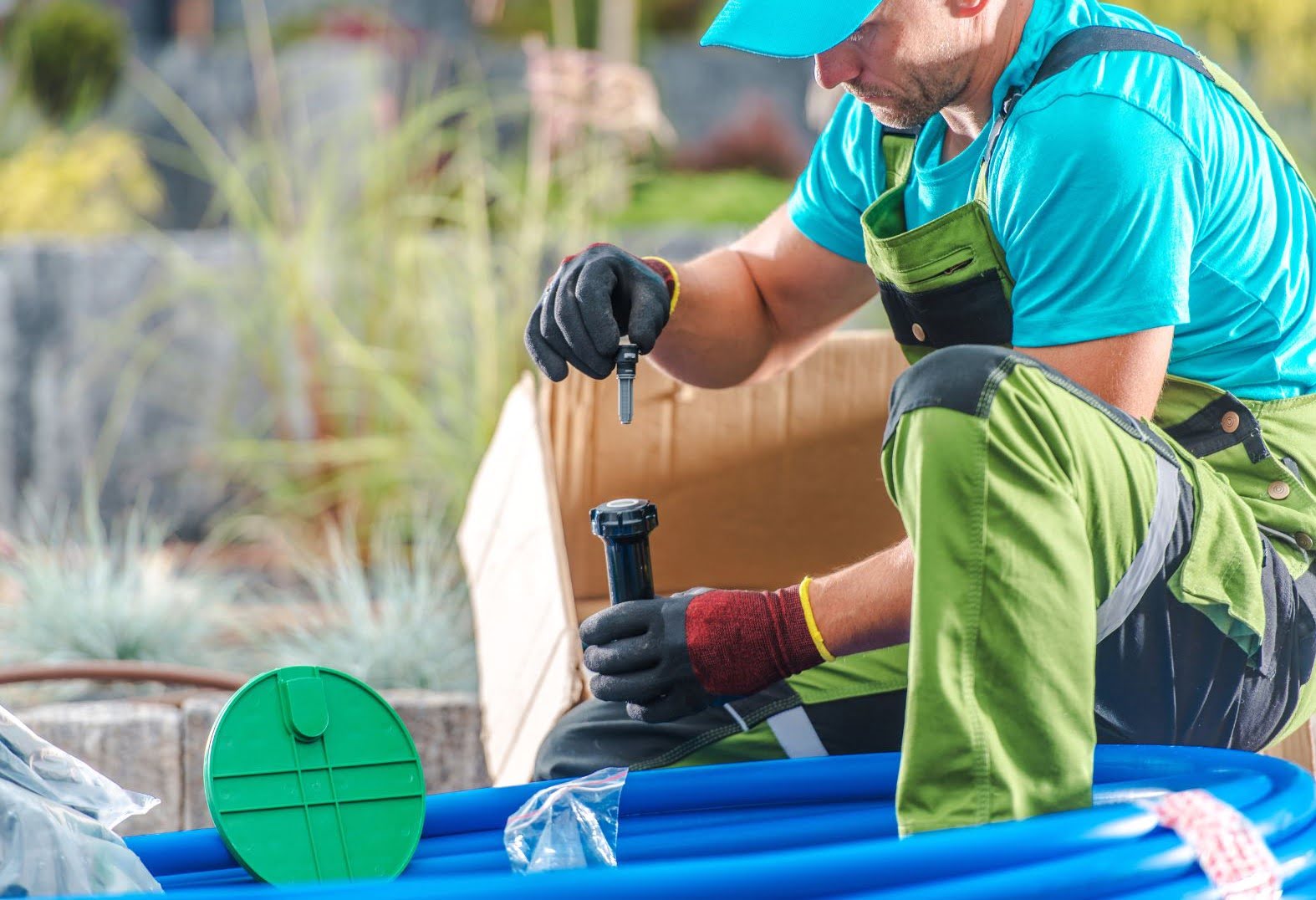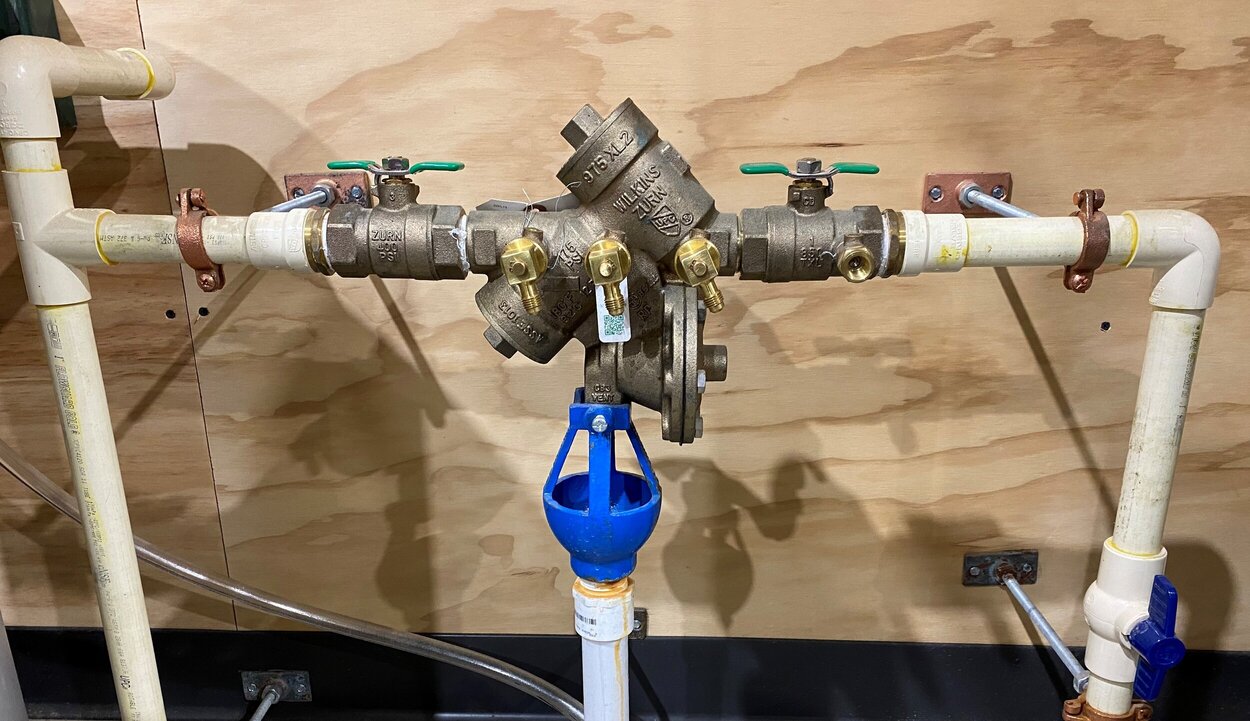Home>Gardening Basics>Tools and Equipment>What Is An Irrigation Meter
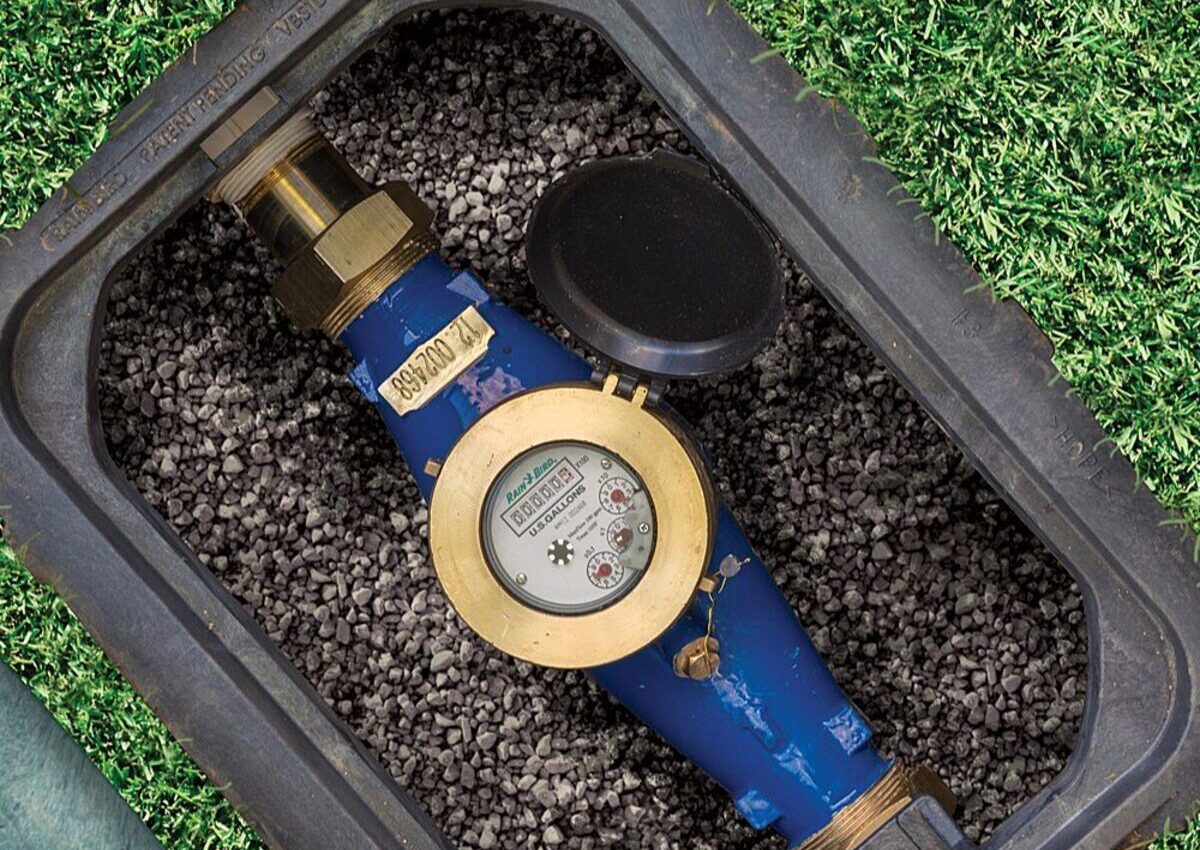

Tools and Equipment
What Is An Irrigation Meter
Modified: January 22, 2024
Discover the importance of irrigation meters and how they are used in the world of tools and equipment. Understand their benefits and how they enhance efficiency.
(Many of the links in this article redirect to a specific reviewed product. Your purchase of these products through affiliate links helps to generate commission for Chicagolandgardening.com, at no extra cost. Learn more)
Table of Contents
- Introduction
- Definition of an Irrigation Meter
- How Does an Irrigation Meter Work?
- Benefits of Using an Irrigation Meter
- Types of Irrigation Meters
- Installation Process for an Irrigation Meter
- Cost of Installing an Irrigation Meter
- Maintenance and Upkeep of an Irrigation Meter
- Common Issues with Irrigation Meters
- Conclusion
Introduction
Welcome to the world of irrigation meters! If you’re a gardening enthusiast or a professional landscaper, you probably understand the importance of efficiently managing water usage for your plants and lawn. And that’s where irrigation meters come in.
An irrigation meter is a specialized tool designed to measure and monitor the amount of water used specifically for irrigation purposes. It provides valuable data that helps you track water consumption, optimize watering schedules, and ensure the most efficient use of water resources.
In this article, we will take a closer look at what irrigation meters are, how they work, and the many benefits they offer. We will also explore the different types of irrigation meters, the installation process, and the costs associated with them. Additionally, we’ll discuss maintenance tips and common issues that you may encounter with these meters.
Whether you’re a homeowner looking to better manage your garden’s water usage or a professional needing a precise measurement tool for larger landscaping projects, understanding irrigation meters is essential. So, let’s dive in and discover how these meters can revolutionize your irrigation practices!
Definition of an Irrigation Meter
An irrigation meter is a specialized device used to measure the amount of water used for irrigation purposes. It is typically installed at the point where water enters the irrigation system, such as the main water line or a separate irrigation line. The meter accurately measures the volume of water passing through it, providing valuable data for water management and conservation.
Unlike a regular water meter that measures the overall water consumption of a property, an irrigation meter focuses specifically on water used for outdoor watering. By isolating irrigation water usage, an irrigation meter allows users to understand and monitor the precise amount of water being used for their gardens, landscapes, farms, or other outdoor areas.
Irrigation meters come in various types and sizes, depending on the specific needs of the user. They are typically designed for residential, commercial, or agricultural use. These meters are often equipped with additional features such as a digital display or a flow sensor, allowing users to easily monitor and control their water usage.
The data collected by an irrigation meter provides valuable insights for water management and conservation. It helps users track their water consumption, identify areas of excessive usage, and make informed decisions about watering schedules and irrigation system efficiency. By understanding and managing water usage more effectively, users can reduce water waste, lower their water bills, and contribute to environmental sustainability.
In summary, an irrigation meter is a specialized device that measures and monitors the water used specifically for irrigation. It helps users track and optimize their water usage for outdoor watering, leading to more efficient water management and conservation.
How Does an Irrigation Meter Work?
An irrigation meter works by measuring the flow of water through the irrigation line and providing accurate data on water usage. It is typically installed at the main water supply line or a separate irrigation line near the point of entry into the irrigation system.
The meter consists of several key components that enable it to accurately measure water flow. These components include:
- Flow Sensor: The flow sensor detects the volume of water passing through the meter. It uses various techniques, such as turbine or ultrasonic technology, to measure the flow rate.
- Display: Many irrigation meters are equipped with a digital display that provides real-time information about water usage. The display may show metrics such as flow rate, total water usage, and even historical data.
- Data Logger: Some advanced irrigation meters have a built-in data logger that records and stores water usage data over time. This data can be downloaded and analyzed to gain insights into water consumption patterns.
- Connection Interface: The meter may have a connection interface, such as a wired or wireless connection, to communicate with other devices or irrigation control systems. This allows for remote monitoring and control of water usage.
Once installed, the irrigation meter accurately measures the flow of water through the irrigation line. As water flows through the meter, the flow sensor detects and records the volume of water passing through. This data is then displayed on the meter’s digital display or communicated to other connected devices.
The meter can provide information such as current flow rate, total water usage, and even allow users to set irrigation schedules based on specific water volumes. This data is extremely helpful for optimizing watering schedules and ensuring efficient water management.
Overall, an irrigation meter works by monitoring the flow of water through the irrigation line and providing valuable data on water usage. By accurately measuring and tracking water consumption, users can make informed decisions about their irrigation practices and ultimately achieve more efficient water management.
Benefits of Using an Irrigation Meter
Using an irrigation meter offers several significant benefits for both residential and commercial users. Let’s explore some of the key advantages:
- Accurate Water Measurement: One of the primary benefits of using an irrigation meter is the ability to accurately measure water usage for your irrigation system. This information allows you to have a clear understanding of how much water is being used for outdoor watering.
- Water Conservation: With precise water measurement data, you can effectively monitor and conserve water while maintaining a healthy landscape or garden. By eliminating water waste and optimizing irrigation schedules, you can reduce your overall water consumption and contribute to environmental sustainability.
- Cost Savings: An irrigation meter helps you track your water usage specifically for outdoor watering. By having a clear picture of your water consumption, you can identify areas of excessive usage and take steps to minimize water waste. This can lead to substantial cost savings on your water bill in the long run.
- Efficient Watering: With the data provided by an irrigation meter, you can fine-tune your watering schedules and ensure that your plants receive the optimal amount of water. This promotes healthier growth while avoiding over-watering, which can lead to issues such as root rot or plant diseases.
- Regulatory Compliance: In some areas, there may be regulations or water restrictions related to outdoor water usage. By using an irrigation meter, you can easily monitor and demonstrate your compliance with these regulations, avoiding potential fines or penalties.
- Data Analysis: Advanced irrigation meters often come with data logging features that allow you to analyze your water consumption patterns over time. This information can help you identify trends, make data-driven decisions, and adjust your irrigation practices for optimal efficiency.
- Educational Tool: An irrigation meter can be a valuable educational tool for teaching children or community members about the importance of water conservation. By visually demonstrating the impact of water usage, it encourages responsible and sustainable watering practices.
By investing in an irrigation meter and utilizing its benefits, you can effectively manage water usage, reduce water waste, save money, and contribute to environmental conservation. Whether you’re a homeowner, landscaper, or farmer, integrating an irrigation meter into your watering practices is a wise decision with long-term advantages.
Types of Irrigation Meters
There are several types of irrigation meters available on the market, each designed to cater to specific needs and applications. Let’s explore some of the common types:
- Turbine Meters: Turbine meters are one of the most popular types of irrigation meters. They use a turbine wheel that rotates in response to the flow of water. The rotation is then converted into a flow rate measurement. Turbine meters are known for their accuracy and durability, making them well-suited for both residential and commercial applications.
- Ultrasonic Meters: Ultrasonic meters operate by emitting ultrasonic waves through the water flow. The speed of sound is affected by the frequency shift caused by the flowing water. By analyzing the frequency shift, the meter can accurately measure the flow rate. Ultrasonic meters are highly accurate and can handle a wide range of flow rates, making them suitable for various irrigation systems.
- Vortex Meters: Vortex meters use the principle of the Von Kármán effect, which involves the formation of vortices when fluid flows past an obstacle. The frequency of these vortices is proportional to the flow rate of the water. By counting the vortices, the meter can calculate the flow rate accurately. Vortex meters are known for their durability and resistance to debris, making them ideal for irrigation applications with sediment or debris in the water.
- Magnetic Flow Meters: Magnetic flow meters, also known as electromagnetic flow meters, operate based on Faraday’s law of electromagnetic induction. These meters have a magnetic field applied to the flowing water and measure the voltage generated as the water passes through the magnetic field. Magnetic flow meters are suitable for a wide range of flow rates and can handle water with high conductivity, making them versatile for irrigation applications.
- Compound Meters: Compound meters combine the features of different types of meters, such as a turbine meter and a positive displacement meter, to handle a broader range of flow rates. These meters are beneficial when you have varying irrigation demands throughout the year or need to measure different flow rates accurately.
- Smart Meters: Smart meters are an advanced type of irrigation meter that incorporates digital technology and connectivity features. These meters can communicate with other devices or control systems, allowing for remote monitoring and control of water usage. Smart meters often come with additional features like data logging, real-time monitoring, and the ability to set irrigation schedules for optimal efficiency.
When choosing an irrigation meter, consider factors such as the flow rate requirements, accuracy, durability, and compatibility with your irrigation system. Consulting with irrigation professionals or manufacturers can help you select the most appropriate type of meter for your specific needs.
Installation Process for an Irrigation Meter
The installation process for an irrigation meter may vary depending on the specific meter type and your irrigation system setup. However, there are general steps that can guide you through the installation process. Here’s a simplified overview:
- Choose the Installation Location: Select a suitable location for your irrigation meter. It is typically installed at the point where water enters the irrigation system, such as the main water line or a separate irrigation line. Ensure that the chosen location allows for easy access and is compatible with the meter’s specifications.
- Shut Off the Water Supply: Before starting the installation, make sure to shut off the main water supply to the irrigation system. This is crucial to prevent water flow during the installation process.
- Prepare the Installation Site: Clear the area where the meter will be installed. Remove any debris, obstacles, or old fittings that may interfere with the installation process.
- Install the Meter: Follow the manufacturer’s instructions for installing the specific irrigation meter you have. This typically involves connecting the meter to the main water supply line or the designated irrigation line. Ensure that the connections are tight to prevent any leaks.
- Secure the Meter: Once the meter is installed, secure it in place using mounting brackets or straps provided by the manufacturer. This will ensure that the meter remains stable and properly aligned.
- Connect the Wiring (if applicable): If your irrigation meter requires electrical connections, carefully connect the wiring following the manufacturer’s instructions. It’s crucial to ensure that the electrical connections are properly secured and insulated.
- Perform a Leak Test: After the installation is complete, turn on the main water supply and check for any leaks around the meter or the connections. If you notice any leaks, tighten the fittings or consult a professional to address the issue.
- Verify the Meter’s Functionality: Ensure that the meter is functioning properly by checking if the flow sensor is detecting water flow and the display is showing accurate readings. Refer to the meter’s user manual to understand its features and functionality.
- Record the Starting Readings: Take note of the starting readings displayed on the meter. This will serve as a reference point for future water usage measurements and tracking.
If you are unsure about the installation process, it’s recommended to seek assistance from a professional plumber or irrigation technician. They can ensure proper installation and provide additional guidance tailored to your specific irrigation system needs.
Cost of Installing an Irrigation Meter
The cost of installing an irrigation meter can vary depending on several factors, including the type of meter, the complexity of the installation, and any additional requirements specific to your irrigation system. Here are some cost considerations to keep in mind:
- Meter Cost: The cost of the irrigation meter itself will vary depending on the type, brand, and features of the meter you choose. Generally, basic meters without advanced features tend to have a lower cost compared to smart meters or meters with advanced monitoring capabilities.
- Installation Labor: If you’re not confident in your abilities to install the meter yourself, you may need to hire a professional to handle the installation. The cost of labor can vary depending on the complexity of the installation and the rates of local service providers. It’s advisable to obtain quotes from multiple professionals to compare prices.
- Additional Materials: You may need to purchase additional materials during the installation process, such as fittings, piping, or electrical connections. The cost of these materials will depend on the specific requirements of your irrigation system and the quality of the components you choose.
- Permit and Inspection Fees: In some areas, you may be required to obtain permits or undergo inspections during the installation process. These fees can vary depending on local regulations and may add to the overall cost of installing the irrigation meter.
- Maintenance Costs: While not directly related to the installation, it’s important to consider the ongoing maintenance costs associated with the irrigation meter. Regular inspections, calibration, and potential repairs should be factored into your budget to ensure the continued accuracy and functionality of the meter.
It’s challenging to provide an exact cost range for installing an irrigation meter due to the various factors involved. However, as a rough estimate, you can expect the total cost, including the meter, labor, and additional materials, to range from a few hundred to a few thousand dollars.
Keep in mind that investing in an irrigation meter can lead to long-term savings on your water bills and contribute to water conservation efforts. It’s advisable to weigh the initial cost against the potential benefits and savings over time to make an informed decision.
Maintenance and Upkeep of an Irrigation Meter
To ensure the accurate and reliable functioning of your irrigation meter, regular maintenance and upkeep are essential. Here are some key aspects to consider when it comes to maintaining your irrigation meter:
- Scheduled Inspections: Regularly inspect the meter for any visible damage, signs of wear and tear, or accumulation of debris. Inspections should be carried out at least once a year or as recommended by the meter manufacturer.
- Calibration: It’s crucial to calibrate your irrigation meter periodically to maintain accuracy. Calibration ensures that the meter provides precise readings and is not affected by factors like changes in water pressure or flow rates. Follow the manufacturer’s guidelines or consult a professional to perform calibration.
- Cleaning and Debris Removal: Clean the exterior of the meter regularly to remove dirt, dust, and other debris that may accumulate over time. Ensure that the flow sensor and display are free from any obstructions that could affect their functionality.
- Leak Detection: Keep an eye out for any leaks around the meter or its connections. Even small leaks can affect the accuracy of the readings and result in water waste. If you detect any leaks, promptly repair or replace faulty components.
- Battery Replacement: If your irrigation meter operates on batteries, monitor their performance and replace them when necessary. Low batteries can cause inaccurate readings or disruptions in meter functionality.
- Data Recording and Analysis: If your meter has data logging capabilities, regularly download and analyze the recorded data. This can help identify any unusual patterns or inconsistencies in water usage, allowing you to make adjustments to your irrigation practices if needed.
- Professional Servicing: Consider having your irrigation meter professionally serviced on a periodic basis. A qualified technician can perform comprehensive checks, conduct thorough maintenance, and address any issues that may be beyond your expertise.
- Adhere to Manufacturer Recommendations: Always follow the specific maintenance guidelines provided by the meter manufacturer. They will offer insights on the recommended maintenance intervals, procedures, and any specific considerations for your particular meter model.
Proper maintenance and upkeep of your irrigation meter will not only ensure accurate water usage measurement but also prolong the lifespan of the meter. By investing a little time and effort in maintenance activities, you can maximize the efficiency of your irrigation system and make the most out of your water management efforts.
Common Issues with Irrigation Meters
While irrigation meters are designed to provide accurate water usage measurements, there are some common issues that you may encounter. Being aware of these issues can help you identify and resolve them promptly. Here are a few common issues with irrigation meters:
- Water Leaks: Leaks can occur in the meter itself or in the connections leading to and from the meter. Even small leaks can lead to inaccurate readings and water wastage. Regularly inspect for any signs of leaks and address them promptly to maintain the accuracy of the meter.
- Blockages or Debris: Over time, debris such as sediment, twigs, or leaves can accumulate in the flow sensor or other parts of the meter. This can impact the meter’s functionality and affect the accuracy of the readings. Regularly clean the meter to remove any blockages and ensure unobstructed water flow.
- Meter Calibration Issues: Meter calibration is essential for accurate water measurement. If the meter becomes misaligned or loses calibration, it may provide inaccurate readings. Regular calibration checks are necessary to ensure the meter’s accuracy, especially if there are changes in water pressure or flow rates.
- Battery Failure: If your irrigation meter operates on batteries, it’s crucial to monitor their performance. Weak or depleted batteries can lead to inaccurate readings or even disrupt the functionality of the meter. Regularly check the battery status and replace them as needed.
- Data Recording Problems: Meters with data logging capabilities may experience issues with data recording or storage. This can occur due to technical malfunctions or memory capacity limitations. Regularly download and back up the recorded data to prevent loss and ensure continuous data collection.
- Environmental Factors: Extreme weather conditions, such as frost, heatwaves, or heavy rain, can impact the performance of an irrigation meter. It’s important to ensure that the meter is adequately protected from harsh weather or environmental elements to prevent damage and maintain accurate readings.
- Compatibility Issues: In some cases, compatibility issues may arise if the irrigation meter is not fully compatible with your irrigation system. It’s crucial to ensure that the meter is compatible with your system’s specifications and requirements to ensure seamless integration and accurate measurements.
- Installation Errors: Improper installation can lead to various issues with the meter’s functionality and accuracy. It’s important to follow the manufacturer’s guidelines or seek professional assistance during the installation process to avoid common installation errors.
If you encounter any issues with your irrigation meter, it’s advisable to consult the manufacturer’s documentation or seek guidance from a professional technician. Promptly addressing these issues will help maintain the accuracy and reliability of your irrigation meter, ensuring optimal water management for your outdoor spaces.
Conclusion
In conclusion, an irrigation meter is a valuable tool for efficiently managing water usage in your gardening or landscaping endeavors. By accurately measuring the amount of water used specifically for irrigation, these meters provide valuable data that enables you to optimize your watering schedules, conserve water, and reduce water bills.
Throughout this article, we’ve explored the definition of an irrigation meter and how it works to measure water flow. We’ve delved into the many benefits of using an irrigation meter, including water conservation, cost savings, and efficient watering practices. Additionally, we discussed the various types of irrigation meters available on the market, the installation process, and the associated costs.
Maintenance and upkeep of the irrigation meter are crucial to ensure accurate readings and longevity. Regular inspections, cleaning, calibration, and addressing common issues such as leaks or blockages are essential for optimal performance.
An irrigation meter is not just a practical tool; it also promotes environmental sustainability by encouraging responsible water usage. By understanding and monitoring your water consumption, you can contribute to the preservation of this precious resource while maintaining beautiful and healthy landscapes.
Whether you’re a homeowner, landscaper, or farmer, investing in an irrigation meter is a wise choice to improve your water management practices. We encourage you to explore the different types of irrigation meters available and consult manufacturers or professionals to find the best option for your specific needs.
Make the most of modern technology and take control of your water usage with an irrigation meter. Embrace the benefits they offer and embark on a journey of efficient water management for a greener future.


